The human eye does a great job of seeing movement, but it doesn’t judge long distances well at all. So, when hunters avail themselves of flat-shooting rifles, it helps to know the exact distance to the target so you can dial in the required elevation adjustments for your ammo in your rifle. Laser range finders (LRFs) are ideally suited to determine distances in the field; however, not all laser range finders are designed to the same performance specs. Whether your goal is to measure the 74 yards remaining to the flag on the 17th hole or that elk at 492 yards, there are products made for you at difference price points.
We recently tested four of the longer-ranging products now available, and we’ll cover the two more expensive products here in the magazine, and the other two in Gun Tests+. First was the SIG Sauer Kilo 4K, which cost us $599 at MidwayUSA.com. It has a maximum range of 4000 yards and has the ability to sync with SIG BDX scopes.
To go head to head with the Kilo, we brought in a Leupold RX-2800 TBR/W, also $599 from MidwayUSA.com, with a claimed max of 2800 yards and a promise of very precise yardage measurements.
The two items we cover in Gun Tests+ were the Burris LRF 2000 $299, which has three ranging modes (Auto, Sport and Hunt). The Burris LRF claims a maximum ranging capability of 2400 yards. Last was the just-released $499 Vortex Laser HD 4000 GB with onboard environmental sensors and a stated max range of 2400 yards.
All four of these range finders have a stated maximum range of 2000 or more yards. Note that pointing these lasers where they might be shined in a human eye is absolutely prohibited, no matter if the box says “eye safe” or not. Strictly adhering to safety protocols, we opted to use buildings, signs, and other features at American Shooting Centers on a day the massive range was closed to the public. True to the tenets of modern engineering and marketing practices, most of these LRFs provides something unique in addition to the ability to range targets. Those capabilities are noted as well.
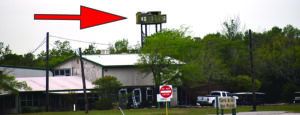
Our Houston test team has mentioned previously that we are persistent and vociferous adherents of a particular practice whose initials are RTM, especially when first employing a new piece of technology. The acronym associated with that practice translates to Read The Manual, and that is exactly what we needed to do with each of the four LRFs in our test. While not quite as complicated as Windows 11, these optics are capable of some astounding feats — more so if you read the instructions.
While there were a couple of targets that proved very difficult to obtain a reading on, overall we were very pleased with the distances we could obtain. We managed to isolate a portable toilet (yep, those are common fixtures at outdoor ranges) from behind a partial screen of trees at more than 700 yards. We obtained good hits on a very large flagpole at more than 1200 yards and stop signs at more than 1100 yards. There are, obviously, some differences in capabilities between the four range finders. We would not hesitate to take any of these four units into the field with us. Here are more details on the SIG and Leupold units.
SIG Sauer Kilo 4K, $599
You guessed it — Sig Sauer named this laser range finder the Kilo 4K because the company claims a maximum ranging capability of 4000 yards. Don’t expect that to mean that you can get a firm reading off that 2-minute-of-angle plate at 4000 yards. Nope. Not even if it is freshly painted. Four thousand yards might work for big objects, if everything is perfect. But they do claim properly reflective objects can be lased at 2000 yards and deer are possible at 1600. We hope this means that you can get a range on an animal a lot further away than you plan on shooting it. But we digress.
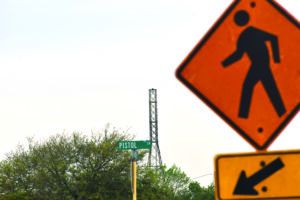
The Kilo box arrived containing the LRF, CR123 battery, carrying pouch, quick-start guide, and a lanyard. It also included a ballistic group card. More on that later. The owner’s manual was a 62-page pamphlet that we downloaded from SIGSauer.com, and we needed it. The unit is enclosed in a hard polymer case with no skid surfaces on the top and bottom. The Range/power button is on the top, and the mode button is on the left side, as seems to be common. The SIG LRF is small at only 4 inches long and provides a 22mm objective aperture with 6x magnification. The CR123 battery provides an estimated 4000 ranges.
Standard features of the Kilo 4K add up to a very substantial list:
- Hyperscan capability creating ranges with four scans per second
- Digital image stabilization
- Multiple display options — Line of Sight, Angle Modified Range (takes angle into consideration), and Archery
- First, best, last, extended and fog target modes
- Lumatic display adjusts automatically to ambient light
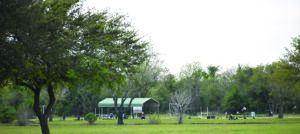
SIG Sauer uses some of its software to take device capabilities an order of magnitude further. First is an optical image stabilization that helps keep the image still when the user isn’t. Then comes a suite of ballistic apps. SIG has been syncing the Sierra BDX (Ballistic Data eXchange) model scopes for some time. The Kilo 4K LRF can also use a similar connection to provide elevation and windage adjustments based on input from the shooter.
Two methods are available. The previously mentioned ballistic group card provides categories of cartridges with similar trajectories. The shooter picks the group most closely aligned with his rifle/ammo combo and selects that group with the mode button. The next time a target is ranged (when in the correct mode), a holdover correction is displayed on the screen of the LRF. Dial that into the rifle or hold high and fire away.
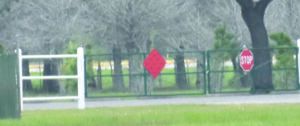
Not specific enough? Download the SIG BDX app and create your own custom cartridge profiles (up to 25 profiles can be stored) that link to the LRF via smartphone to create an even more precise solution. The method allows for wind data and then provides a windage solution as well. Want even more? There is a third level to the data capabilities via syncing with Bluetooth-equipped Kestrel and Garmin devices. Note that the ballistic solutions are provided by Applied Ballistics — the favorite ballistic app of the Houston test group. The SIG Kilo 4K will also pair with Basemap software to allow you to overlay your data onto a digital map. All the apps are free except for the full version of the Applied Ballistics Mobile app (not required), which is $30.
The display is configurable. How much data do you want to show? Do you want to see a simple circle for target selection or a complete reticle. Default settings turn the display off after 30 seconds, but that can be customized as well. Put the circle around the target and press the top button for a single range. Keep the range button depressed for a continuous series of ranges. Distance appears measured to the tenth of a yard.
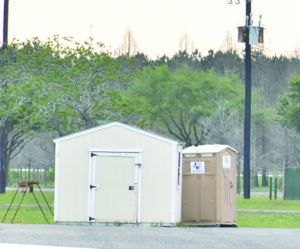
The aiming circle on the reticle is somewhat smaller than many LRFs we’ve used, and we liked the extra precision it allowed. The Kilo 4K picked up targets easily and consistently. We checked out the BDX-U and checked the data against a known rifle and the data provided for it by the Applied Ballistic Mobile app we most commonly use. After building the custom profile in the SIG BDX app, we ranged targets, then we waited a couple of seconds for the holdover to display. Those numbers consistently matched the data provided from ABMobile. The only failure to range that we observed was on a 45% IPSC plate that had, for some reason, been painted red. Being on a Known Distance range, all we needed was for the LRFs to confirm it was at 500 yards, but none of the four range finders could pick up that particular plate. Warranty is five years.
Our Team Said: The SIG Sauer Kilo 4K laser range finder provided a precise aiming point and good data accurate to the tenth of a yard. We matched the projected holdover data to the performance of a well-known rifle and found numbers matched up well. Add in the ability to sync the BDX scopes and more aftermarket software, and you have a winner.
GUN TEST GRADE: A
Leupold RX-2800 TBR/W, $599
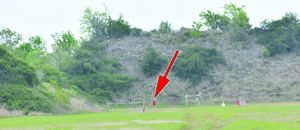
The RX-2800 arrived with the accessories we’ve come to expect: a nice box, CR123 battery, carrying case, and a lanyard. Leupold also ships the unit with an instruction manual. We understand manuals for these multi-function devices can be somewhat involved, but we greatly prefer having the primary information in a pamphlet that can accompany the LRF. This range finder has 7x magnification along with a big 27mm objective aperture — the largest in this test group. Expected life on this battery was also 4000 ranges.
Capabilities include:
- True Ballistic Range or Line of Sight range display
- Single range and Scan mode ranging
- Displays in meters or yards (default)
- Holdovers can be displayed in milliradians or MOA
- A windage adjustment for a 10-mph full-value wind
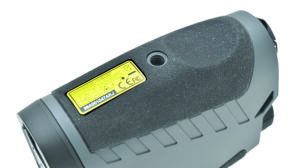
Laser range finders are expected to collect accurate data and display the data to the user. Different folks are going to have different preferences regarding how that data should be displayed. We thought the Leupold RX-2800 did an outstanding job of presenting enough information, but not too much. We liked the reticle selections as we settled on the simple “+” with the open middle, thinking it was very easy to select a precise point of aim. The display didn’t “bloom” on us even when using the brighter settings.
The onboard ballistics app is provided by the same engineers who developed the Sierra Infinity Exterior Ballistics software. The operation was fairly simple. Twenty-five ballistics “Groups” are provided along with data on each to help users decide which is most appropriate for their rifles. Group selection is done from the mode switch. Then just range and go. We found their solutions to be within a 1⁄10th of a mil or 2 with the known adjustments on our rifle. As mentioned, the wind adjustment shown is for a constant, full-value 10-mph wind. Since the actual wind will never be exactly what is shown on the display (of course), the user must make adjustments for different angles or velocities, but at least he has a good starting place.
We would like to provide some hints on laser range finders, what works well and what doesn’t, courtesy of Leupold and the manual that accompanies the RX-2800.
“Surface texture, color, size and shape of the target all affect reflectivity, which in turn affects the maximum range of the instrument. As a rule of thumb, brightly colored targets are much more reflective than dark targets. Tan game coats are more reflective (and thus provide a more solid reading) than a black roof. A shiny surface is more reflective than a dull surface. Smaller targets are more difficult to range than larger targets. Light conditions, haze, fog, rain and other environmental conditions can all affect ranging performance. Any factor which degrades air clarity will reduce the maximum effective range. The sun generates infrared energy that can degrade ranging performance in bright conditions or while ranging towards the sun.”
The RX-2800 gave us ranges consistent with the other units on every target selected. We liked the clarity and the crispness of the display best of the four units tested. We would like the mode button to be a bit larger. Without actually looking at it, finding the button low on the left side and activating it was a bit of a challenge. While not as extensive as that for the SIG, the onboard app was easy to configure and use. Warranty is only two years, substantially below the other three tested.
Our Team Said: The Leupold RX-2800 TBR is another quality laser range finder that also offers a ballistic solution. The software involved is not quite as complete as others in this test. That means it provides most of the necessary data while being less complicated to use. For many, less is more. We recommend trying both to see which you prefer.
GUN TEST GRADE: A-
Laser Range Finder Specifications
| Brand | SIG Sauer | Leupold |
|---|---|---|
| Model | Kilo 4K | RX-2800 |
| Magnification | 6x | 7x |
| FOV @ 100 Yds | 31.4 feet | 31.8 feet |
| Range Maximum | 4000 yards | 2800 yards |
| Range Reflective, Trees | 2000 yards | 1300 yards |
| Range, Deer | 1600 yards | 1100 yards |
| Weight | 7.25 oz. | 7.9 oz. |
| Objective Aperture | 22mm | 27mm |
| Battery | CR 123 | CR 123 |
| Dimensions | 4x3.1x1.5 in. | 4.4x2.9x1.5 in. |
| Number of Ranges | 4000 | 4000 |
| Software | Applied Ballistics | Sierra Infinity |
| Price | $599 | $599 |
| Warranty | 5-year limited | 2 years |
| SIG Sauer | Leupold | |
| Objects Lased | Kilo 4K | RX-2800 |
| From Location A | ||
| Storage Building | 335.2 | 335 |
| Trash Can | 347.9 | 347 |
| Stop Sign | 706.9 | 704 |
| County Building | 716.8 | 716 |
| Shooting Station | 434.8 | 431 |
| Portable Toilet | 700.4 | 698 |
| Dove Tower | 626.6 | 622 |
| From Location B | ||
| Storage Building | 733 | 732 |
| Portable Toilet | 739.7 | 735 |
| Stop Sign | 1104 | 1101 |
| Transmission Tower | 846 | 842 |
| From Location C | ||
| 20x30 in. Torso Plate | 440 | 448 |
| 45% IPSC Plate at 510 Yards | * | * |
| Mule Deer Metal Cutout | 623 | 624.20000000000005 |
| From Location D | ||
| Flagpole | 1246 | 1244 |
| Dove Tower | 959 | 955 |
| Lattice Tower | 839.7 | 836 |


























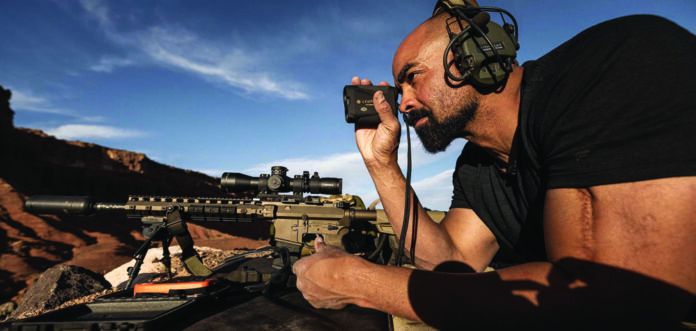
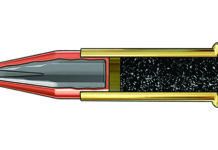
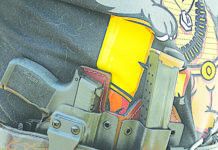

Thank You !! Which did you end up with ?
I bought a Sig KILO 2000 which was special made for Cabelas by Sig. I got it on sale for about $200 and it is great. I ranged deer sized objects (dirt mounds and hay bales) easily at 850 yards and highway signs at 1200 yards. It has a lot of high end features for a great price. I don’t need the excess capacity of ranging to 4000 yards , there are few places where you can see that far unless you get out to desert or plains.
Extreme ease of use
Near-instantaneous downrange readings
Powered by the industry’s fastest digital processor
Revolutionary Lightwave DSP Technology
HyperScan mode with RangeLock
Provides both line-of-sight and angle-modified ranging
6×22 mm monocular lens with SpectraCoat anti-reflection coatings
Highly visible, transparent red OLED display
Simple 2-button interface
Compact, lightweight polymer housing
Comfortable eyecup with diopter adjustment
Includes storage case